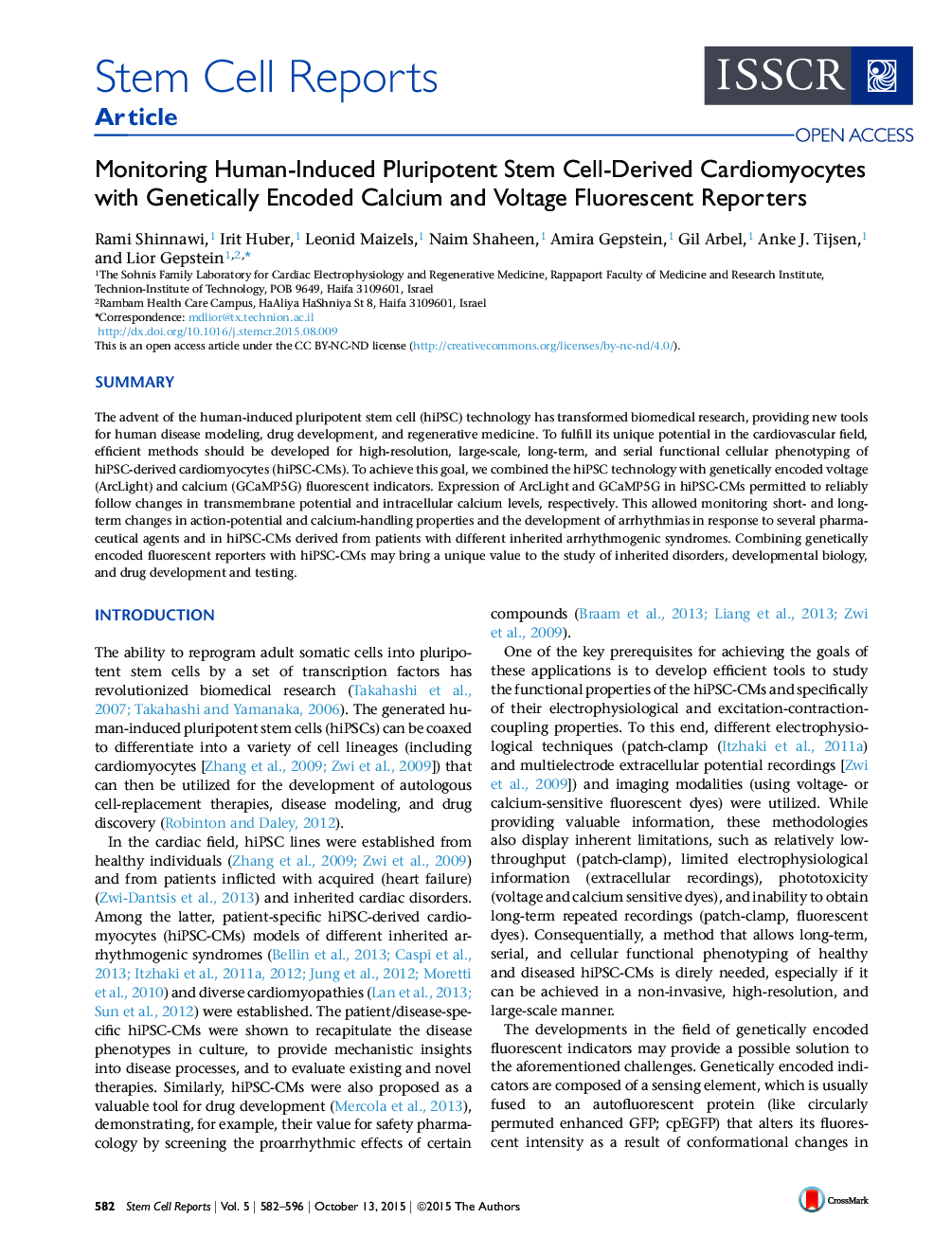| Article ID | Journal | Published Year | Pages | File Type |
|---|---|---|---|---|
| 2093425 | Stem Cell Reports | 2015 | 15 Pages |
•Expression of genetically encoded voltage and calcium reporters in hiPSC-CMs•Analysis of the electrophysiological and calcium-handling properties of hiPSC-CMs•Drug screening using the optically derived action potentials and calcium transients•Modeling of inherited disorders with hiPSC-CMs expressing fluorescent reporters
SummaryThe advent of the human-induced pluripotent stem cell (hiPSC) technology has transformed biomedical research, providing new tools for human disease modeling, drug development, and regenerative medicine. To fulfill its unique potential in the cardiovascular field, efficient methods should be developed for high-resolution, large-scale, long-term, and serial functional cellular phenotyping of hiPSC-derived cardiomyocytes (hiPSC-CMs). To achieve this goal, we combined the hiPSC technology with genetically encoded voltage (ArcLight) and calcium (GCaMP5G) fluorescent indicators. Expression of ArcLight and GCaMP5G in hiPSC-CMs permitted to reliably follow changes in transmembrane potential and intracellular calcium levels, respectively. This allowed monitoring short- and long-term changes in action-potential and calcium-handling properties and the development of arrhythmias in response to several pharmaceutical agents and in hiPSC-CMs derived from patients with different inherited arrhythmogenic syndromes. Combining genetically encoded fluorescent reporters with hiPSC-CMs may bring a unique value to the study of inherited disorders, developmental biology, and drug development and testing.
Graphical AbstractFigure optionsDownload full-size imageDownload as PowerPoint slide
